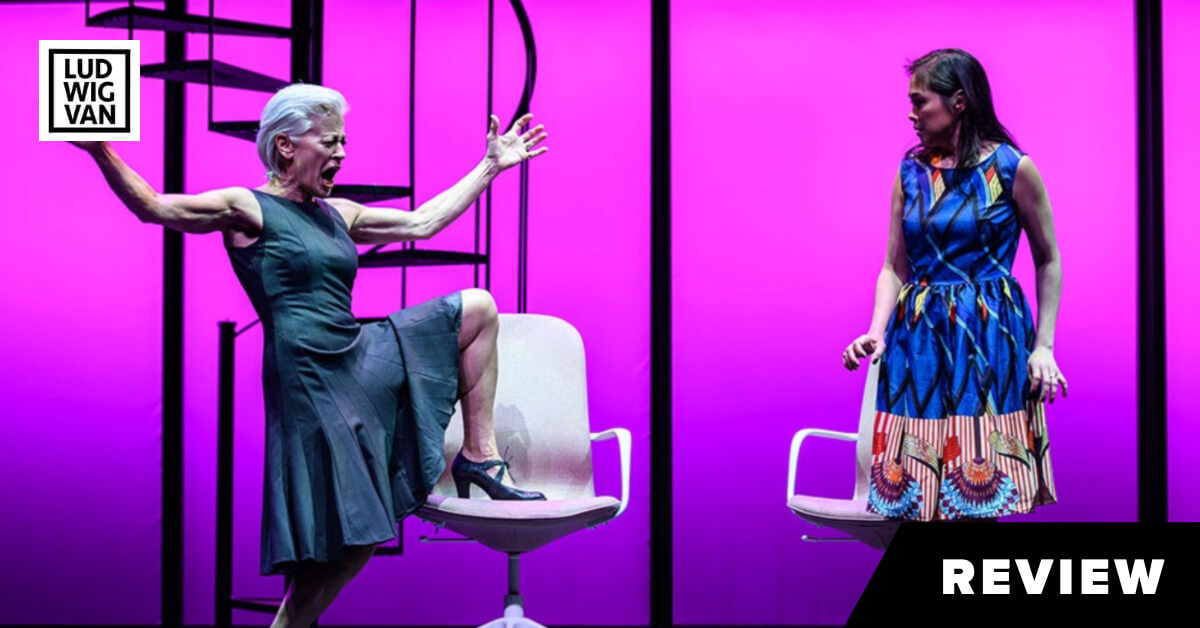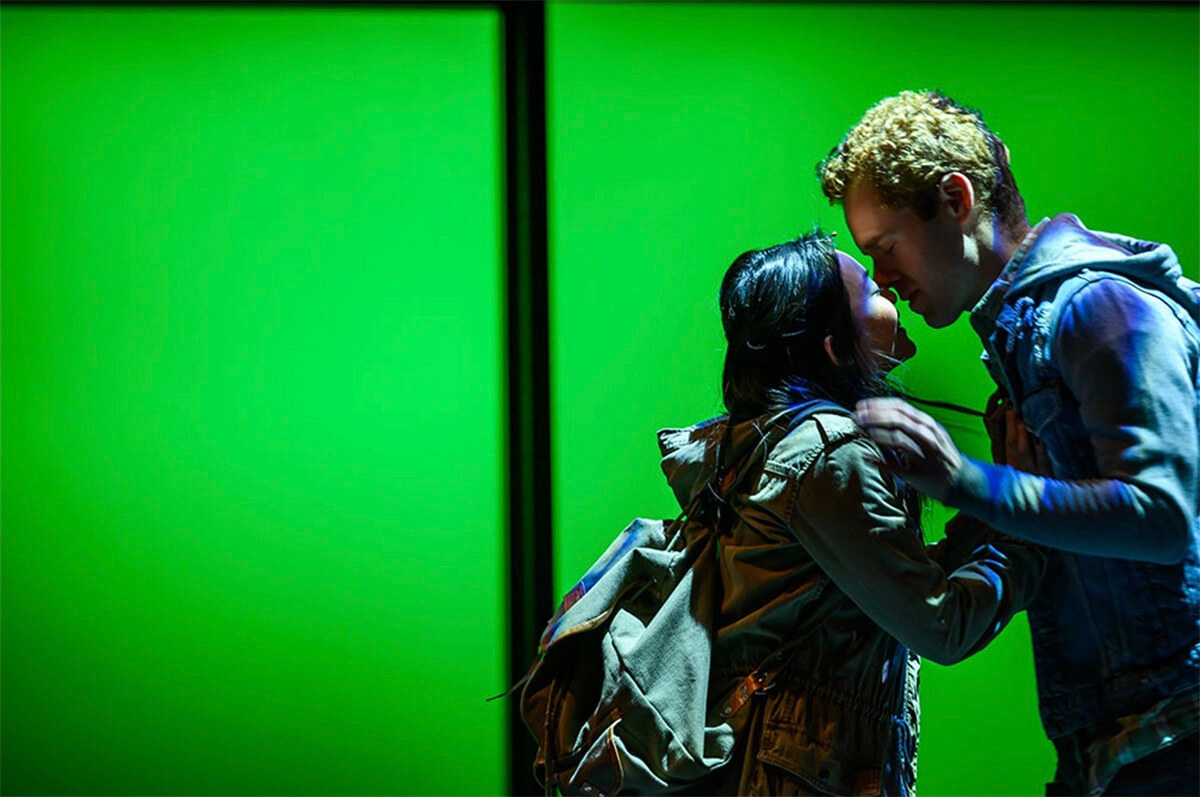Using the surprising format of a rock opera, Next to Normal deals with issues of medical ethics, prescription drug abuse, and the devastating impact of mental illness.

David Mirvish & Musical Stage Co./Next to Normal, music by Tom Kitt, book and lyrics by Brian Yorkey, directed by Philip Akin, musical staging by Tracey Flye, CAA Theatre, Apr. 30 to May 19. Tickets available at mirvish.com.
The first Pulitzer Prize for Drama was given out in 1918, and during the subsequent one hundred years, only eight musicals have ever won this most prestigious of awards. In honouring Next to Normal in 2010, the Pulitzer committee cited the musical’s ground-breaking foray into new territory. The subject matter deals with a woman who has been struggling with bipolar disorder for sixteen years, and the devastating effect her mental illness has had on her suburban family and herself. This new Canadian cast production rises to the musical’s many challenges, and the result is a powerful and provocative evening of theatre.
The plot of Next to Normal is not for the faint of heart. Diana Goodman (Ma-Anne Dionisio) has been diagnosed as “bipolar depressive with delusional episodes”. The impact of her mental illness on her long-suffering husband Dan (Troy Adams) and daughter Natalie (Stephanie Sy) has been devastating. In her delusional episodes, Diana sees her son Gabe (Brandon Antonio), who died when he was just eight months old, as a teenage boy. The subplot revolves around troubled sixteen-year-old Natalie and her boyfriend Henry (Nathan Carroll). Rounding out the cast is Diana’s doctor (Louise Pitre).
Tom Kitt and Brian Yorkey, the creators of Next to Normal, have publically stated that they were trying to present an even-handed look at the difficulty of managing depression. They take no sides as to which, if any, is the most effective treatment. The crux of the musical is a decision that Diana and Dan must make. After a suicide attempt, it is clear that Diana’s current psychopharmacology drug therapies are not working, and Dr. Madden suggests electroconvulsive therapy or shock treatment. In fact, it was a news report on electroconvulsive therapy that was the inspiration for Next to Normal. The men were looking for something different as the subject for their final project for a writer’s workshop, and this 1998 ten-minute sketch grew up to be this much-honoured, full-blown musical that debuted in 2008, and reached Broadway in 2009.

Next to Normal is a through-composed rock opera with minimal spoken dialogue. The score is comprised of mostly soft rock musical numbers but there is variety in form, such as the patter song “Just Another Day” or the waltz “There’s A World”. The creators have built into the score quite complicated ensembles ranging from the participants talking about the same thing, to putting forth contrasting points of view. To sing this score, the performers have to be belters, a norm in modern musicals since Phantom and Les Miz, and the talented cast can certainly crank out the power. All are very impressive singers with incredibly clear diction. Not one word of the text is lost, and you can feel that the audience is listening intently to every word of Yorkey’s sophisticated and clever lyrics.
Director Philip Akin has worked closely with the cast to be singing actors, since this is an opera, and all the characters are sharply detailed. While there is really no choreography per se, Tracey Flye’s musical staging is focused on what each number is trying to say. Often the cast is standing in various parts of the stage just singing. At other times, they perform sung conversation by interacting with each other. This is a show of carefully crafted movement patterns on the part of Akin and Flye that sharply pinpoint the relationships between the characters.
Dionisio portrays the fragile Diana with heart-breaking vulnerability. We believe her character absolutely, whether in a state of reality or delusion. Selfless Dan could easily be a nebbishy, one-dimensional role, but Adams make despair have many nuances. Sy has the most multifaceted character, at once angry, rebellious, hurt and defiant. For much of Natalie’s life, her parents’ concentration on her mother’s mental illness has pushed their daughter into the background, and Sy is like a coiled spring of frustration. As the slacker, weed-smoking Henry, Carroll presents a sympathetic portrayal of both a follower in Natalie’s wake, yet one who manages to show some mettle when needed. For her part, Pitre’s Dr. Madden is the epitome of collected calm, always reasonable and objective. Perhaps Pitre’s greatest strength is projecting her character’s ambiguous nature, making us wonder just how effective she is as a clinician. Gabe is a most seductive role, the enabler of his mother’s most destructive behaviour, and Antonio makes this loving son positively dangerous as a result.

Steve Lucas’ set and lighting design is simplicity plus. Three flats with cut out windows and doors give the illusion of the Goodman’s suburban house. The back wall slides open and shut to provide surprise entrances and exits. A circular staircase to an upper balcony gives perspective. Natalie, for example, spends much time up there. Set pieces, as needed, are wheeled on and off. For example, the doctor rolls in two chairs for her sessions with Diana. Director Philip Aiken has ensured prompt efficiency in terms of the instant scene changes. The hidden five-member band under conductor David Terriault provides the excellent musical accompaniment.
The achievement of Kitt and Yorkey cannot be underestimated. Using the surprising format of a rock opera, they created a show that deals with the medical ethics of clinical treatment, the possibility of prescription drug abuse, the negative side effects of medication, not to mention the impact of mental illness on an individual’s sense of self-worth and personal identity. Next to Normal ensured that there is now no subject too heavy or too dark for the modern musical stage.
LUDWIG VAN TORONTO
Want more updates on classical music and opera news and reviews? Follow us on Facebook, Instagram or Twitter for all the latest.
- INTERVIEW | Actor Diego Matamoros Takes On Icon Walt Disney In Soulpepper Production Of Hnath Play - April 16, 2024
- SCRUTINY | Opera In Concert Shine A Light On Verdi’s Seldom Heard La Battaglia Di Legnano - April 9, 2024
- SCRUTINY | Lepage & Côté’s Hamlet Dazzles With Dance And Stagecraft Without Saying Anything New - April 5, 2024



